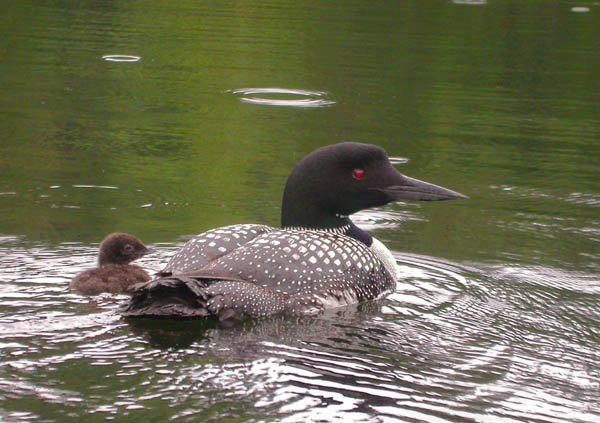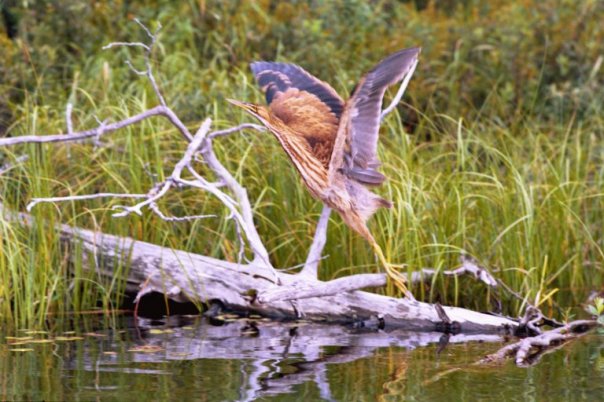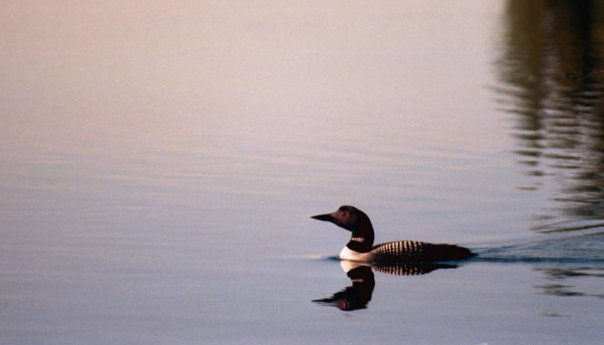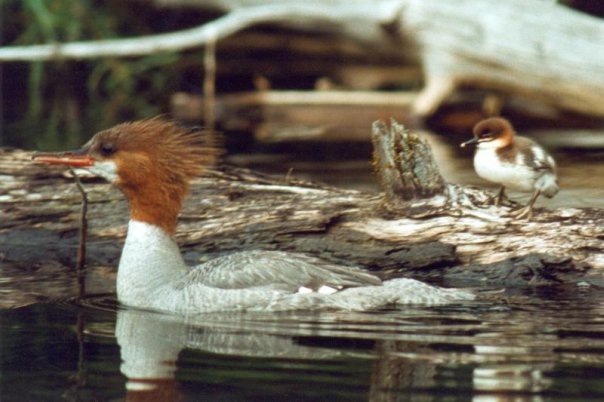
Summer Birding In Muskoka
Turn off the iPod for a minute, pull out the ear buds and listen to what Muskoka really sounds like when you enjoy a summer birding experience in the region.
 Listen to the symphony: the soft sigh of pines, the rustle of maple and oak leaves, the percussion of waves on shore, a crescendo of birds at dawn tapering off to a sotto voce duet by peewee and vireo in the afternoon, and then in a grand finale, a single, drawn out call from a loon on a lake as dusk turns into night.
Listen to the symphony: the soft sigh of pines, the rustle of maple and oak leaves, the percussion of waves on shore, a crescendo of birds at dawn tapering off to a sotto voce duet by peewee and vireo in the afternoon, and then in a grand finale, a single, drawn out call from a loon on a lake as dusk turns into night.
Summer is a great time to view and listen to birds here, as it’s a busy time for them. The operatic drama of spring courtship has waned by July, but their songs still serve as a declaration of a feeding and nesting territory, especially now while they raise their young. Nests are everywhere, and a lot of the calls you may hear could be young ones screaming that they’re famished.
 At a boathouse – in fact, on any structure near water and with woods around it – there’s a good chance a phoebe has built a nest. You’ll see a drab, grey-brown bird flitting up and under the eaves to its mud-and-grass nest, or sitting on a tree branch nearby flipping its tail repeatedly. That tail-wag and its raspy “fee-bee” call make it an easy bird to identify.
At a boathouse – in fact, on any structure near water and with woods around it – there’s a good chance a phoebe has built a nest. You’ll see a drab, grey-brown bird flitting up and under the eaves to its mud-and-grass nest, or sitting on a tree branch nearby flipping its tail repeatedly. That tail-wag and its raspy “fee-bee” call make it an easy bird to identify.
The phoebe is one of Ontario’s earliest spring arrivals, and would have built its nest by late April. With two weeks to build a nest, another 16 days to incubate as many as six eggs, then another 20 days for the young to fledge: by late May or early June the first young will be learning to fly. And by then the pair of phoebes may be starting their second brood.
Away from the human habitat and anywhere there is open, grassy or gravelly ground you are likely to hear the familiar cry of the killdeer calling its own name. You’re also likely to cause a great deal of consternation if you walk across a patch of open ground where there are killdeers. Young killdeers, five-inch fuzzy replicas of their parents, have left the depression in the ground that was their nest and are beetling about on matchstick legs, learning how to probe the ground for food. Come too close and a few alarm calls from the parents will stop the young dead in their tracks and they’ll disappear into the grass. Meanwhile the parents will be distracting you with great fluttering and frantic shrilling, feinting towards you and then leading you in the opposite direction of their young. They’ll let out a plaintive trill, flop to one side and stick a wing out as though wounded.
Near the edge of the woods you may catch the wonderful spiralling song of the veery, one of our more common thrushes, or, deeper into the forest, the rich “ee-o-lay” followed by trills or warbles of its cousin the wood thrush. They, too, could be raising a second brood of young in nests carefully concealed in dense underbrush. The warblers of the deep forest are all but finished their singing now but you may hear a few of their high, varied calls.
All these birds have more than just a song in their vocabulary: each has its own location call notes, alarm notes and a variety of others pips and whistles whose meanings we can only guess at. And of course, the young will be wailing over their empty stomachs, so the forests will never be completely absent of birdsong.
call notes, alarm notes and a variety of others pips and whistles whose meanings we can only guess at. And of course, the young will be wailing over their empty stomachs, so the forests will never be completely absent of birdsong.
A birding experience in Muskoka is not to be missed – come and listen to the real songs of summer.
 Guest Blogger: John Challis
Guest Blogger: John Challis
John Challis is a member of the Muskoka Field Naturalists, which meets once a month in Bracebridge or Gravenhurst. This club and the Huntsville Nature Club provide a wealth of expertise about the natural world around us in Muskoka.
Photos courtesy of Randy Mitson of Explorers’ Edge include Common Loon, the American Bittern and Merganser.
![]()
